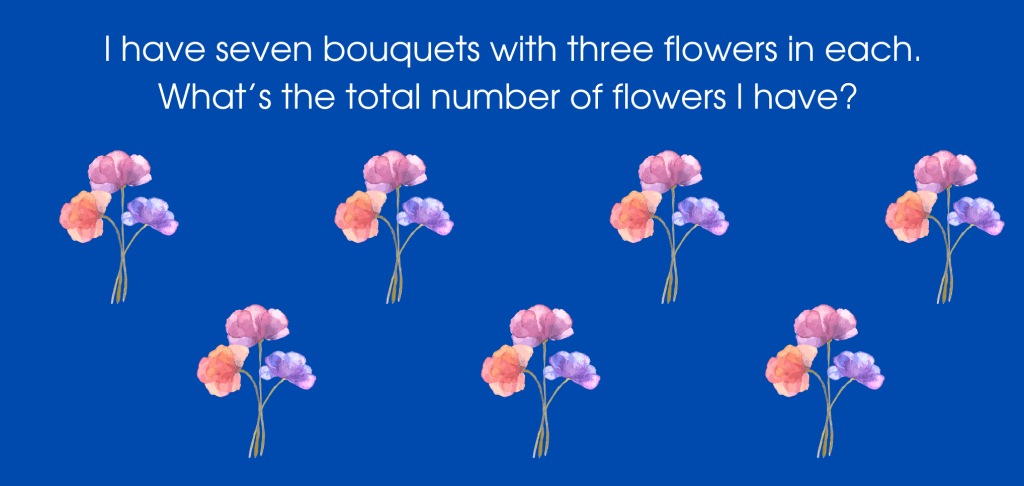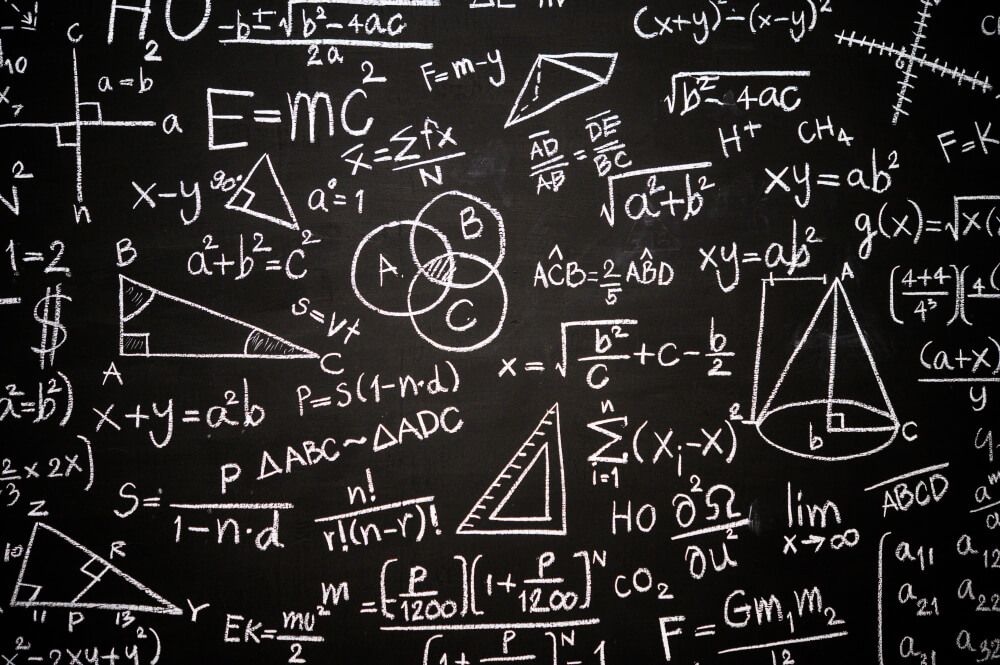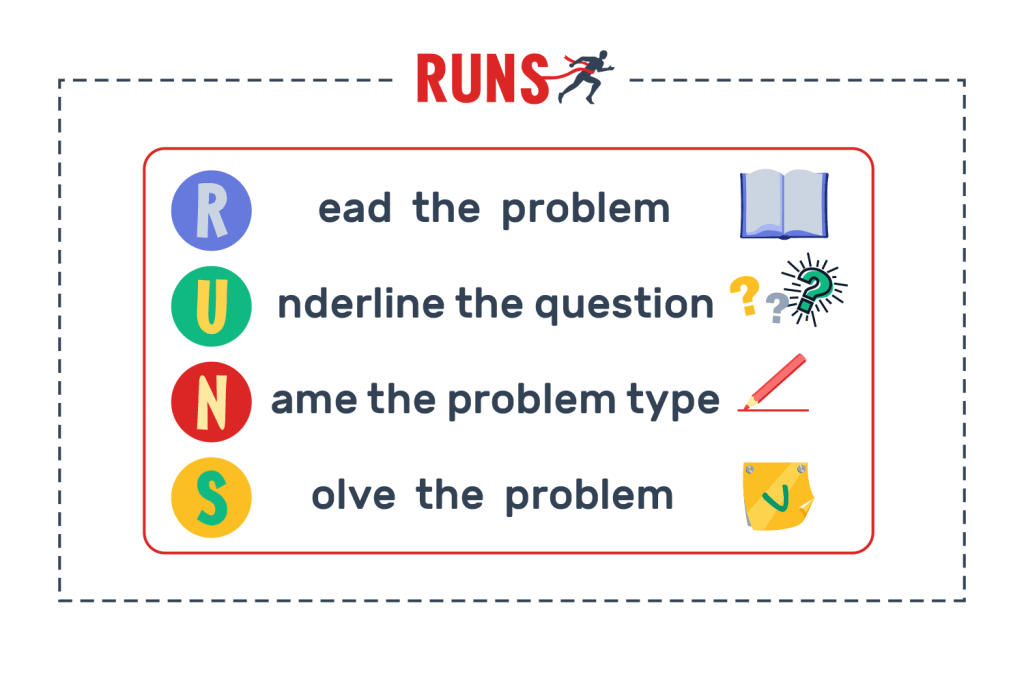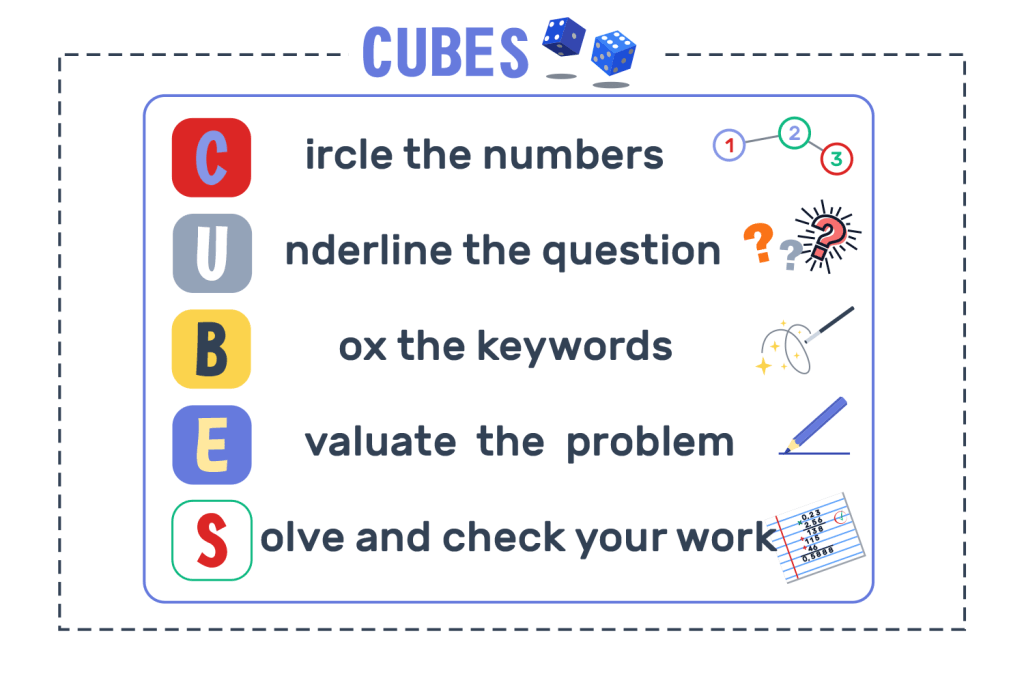15 Strategies for Problem-Solving in Math
reviewed by Jo-ann Caballes
Updated on April 2, 2025
Problem-solving skills are the core instrument that allows kids to succeed in their math endeavors. But what if your child is yet to develop them? No worries — this guide contains the 15 most effective problem solving strategies in mathematics with examples.
Key Points
- Adopting flexible math problem solving strategies allows you to successfully accelerate your kid’s skills.
- Using worksheets is one of the most effective math word problem solving strategies in PDF format to use for kids of all ages.
- Strategies like summarizing the problem, reading tasks out loud, and trying to rewrite word assignments with numbers work for children in elementary classes.
- If you have a kid in grades 5 to 8, these problem solving strategies in mathematics can be most beneficial for them: solving a problem according to a steady flow with clearly defined steps, spotting patterns, and breaking them down into lists or tables.
What are problem-solving strategies in math?
The problem solving strategies in math relate to specific methodologies students can use to solve their current tasks in the subject. Simply put, it’s the whole course of action a child takes from the moment they first encounter a problem until they develop a final solution for it.
Math problem solving skills examples
- Practicing through games. Math problem-solving strategies for kids include practicing through games, such as math riddles, mysteries, and puzzles, to boost critical thinking.
- Safe brainstorming. According to research by the University of Missouri, children encouraged to express their ideas are overall braver and more creative in problem solving.
- Experimenting with solutions. With this technique, kids learn to apply their past knowledge to the current problem, even if it’s not the regular approach to solving it.
- Real-life application. Once children get the context for their math problems, they start understanding why they need to acquire specific knowledge.
- Step-by-step approach. Breaking one big problem into several manageable chunks helps to develop concrete steps for getting a solution.
What are 10 strategies for solving a math problem?
- Use free math problem-solving resources
- Highlight keywords
- Determine the unknown
- Read it aloud
- Make a summary
- Draw a model
- Do it backwards
- Use a formula
- Rewrite a sentence with numbers
- Demonstrate it physically
Math problem solving strategies for elementary students
Problem solving strategy in math #1: Free math problem-solving resources
These days, children can access free online resources, including worksheets, helpful platforms, and math apps. Any of these aids can act as a solver, guiding them towards solutions. But how do they work? The thing is that those tools commonly offer step-by-step explanations, varied difficulty levels, and real-world applications. Thus, regularly practicing with them gives brilliant results and increases the ability for better problem solving in math.

How do Brighterly math worksheets help your child with math problem solving?
Math worksheets developed by Brighterly math tutors are exclusive learning resources that contain a variety of tasks for kids in grades 1 to 9.
Here’s why they can help improve problem-solving skills:
- Strategies for problem solving in math worksheets provide a more interactive way for children to learn through fascinating tasks.
- They create a real-world context, thereby increasing kids’ awareness and interest.
- They can be used in any setting, both online and offline. With the variety of problem solving strategies in mathematics PDF worksheets offered at Brighterly, kids will definitely find something of interest.
So, what’s included?
These are just some of the tasks you can adopt for your math program:
- Addition Word Problems for Grade 2 Worksheets
- Subtraction Word Problems Worksheets
- Free Brighterly Worksheets for Grades 1 to 9

Note: While worksheets are ideal for home practice, they won’t suit as a fully-fledged approach for improving math literacy.
According to Benjamin Bloom’s study, the “2 Sigma Problem,” learning with an individual tutor is x2 more effective as autonomous knowledge acquisition, as it promises a personalized approach and focus on individual needs.
That’s why I strongly recommend booking a 1:1 math class for better learning.
Math problem solving strategy #2: Highlight keywords
Highlighting the keywords helps students focus on what’s required in their math task. In the ideal scenario, a child can outline the gist independently without extra visual representations. However, in the early stages, highlighting keywords can be of much help.
For example, if a problem asks to determine how many things are left, it probably requires subtraction — kids should be able to decide on such triggers.

Math problem solving strategy #3: Determine the unknown
One reason why students can fail while solving math problems is that they don’t understand what’s actually required of them. That’s why you should teach them to understand unfamiliar concepts before solving the task. It is one of the key problem solving strategies in math: ensuring students identify the unknown before jumping into the solution.
Most commonly, a math problem contains a question at the end. That’s where you can find the “unknown” for the task. In the above example, the question “How many apples does she have left?” specifies that students should be researching the number of apples.
Problem solving strategy in math #4: Read it aloud
You might doubt it, but reading a problem aloud really helps one understand the gist better. That’s because this action activates auditory processes. Now, they have two cognitive processes working on your side. This way, the kid can better comprehend and interpret the task.

Math problem solving strategy #5: Make a summary
Strategies for math problem solving like this one are especially beneficial for elementary school kids, who are currently building on the basic math concepts. Ask the child to summarize their math problem in oral form. If they face difficulties, ask them to write it down first.
In most severe cases, follow this flow:
| 1. Ask the kid to read the problem aloud |
| 2. Then, help them determine the unknown |
| 3. Encourage them to make a summary of the problem in written form |
| 4. Finally, they should retell the problem gist to you |
In practice, it means that the strategy that engages multiple cognitive processes, such as reading problems aloud and summarizing them, can enhance comprehension and problem solving.
Problem solving strategy in math #6: Draw a model
Drawing a model is one of my favorite strategies to solve math problems, so I commonly use it in my practice! The technique proves to be very effective because it creates a clear picture of what is expressed by words. This way, children can visually comprehend quantities and qualities.
Here’s just one example of how it works:

Math problem solving strategy #7: Do it backwards
Some kids develop specific problem solving strategies for math, advancing through multiple steps to get the final solution. These are the folks who will find the do-backwards strategy most beneficial. It undermines the idea that the kid should solve a task by taking a potential solution. Then, they should move in the opposite direction, trying to clarify the steps needed to receive it.
Key steps in math problem solving:
Here’s a task we will try to solve: Lisa is thinking of a number. If she doubles it and then subtracts 6, she gets 14. What was Lisa’s original number?
Now, here’s the process:
| 1. We start with the final result, which is 14, and work backward |
| 2. Lisa got 14 after subtracting 6 → So, we add 6 back: 14 + 6 = 20 |
| 3. Before that, she doubled her number → So, we divide by 2: 20 ÷ 2 = 10 |
| 4. Now we know that Lisa’s original number was 10. |
Problem solving strategy in math #8: Use a formula
Learning formulas, including those for math operations like multiplication or division, is a robust problem solving strategy in math, which should be adopted from the early school years. So, don’t let your child ignore them. Sometimes, simple memorization guarantees their success while solving math tasks at home and during exams.

Note: While suitable for problem solving in mathematics, plane memorization of formulas is often insufficient for success. Instead, kids need an in-depth comprehension of concepts and the reason-result relation.
According to a study discussed in ResearchGate, the knowledge of formulas proves to be less effective if students do not understand their application.
Math problem solving strategy #9: Rewrite a sentence with numbers
Encourage a child to rewrite sentences into numbers when dealing with word tasks for mathematics problem solving. However, first check if they understand the context to avoid difficulties and failures.
Here’s how kids can use this strategy to approach problem solving in math grade 1 – 5
The task:
Emma has 3 boxes of chocolates. Each box contains 6 chocolates. She gives 5 chocolates to her friend. How many chocolates does she have left?
Solution:
| 1. Total chocolates: 3 × 6 = 18 |
| 2. Chocolates given away: 5 |
| 3. Chocolates left: 18 − 5 = 13 |
| 4. Now we know that Emma has 13 chocolates left. |
Math problem solving strategy #10: Demonstrate it physically
Math strategies for problem solving like this one greatly benefit the youngest learners. It implies that kids should act out the problem through moving around, using manipulatives like blocks, or utilizing any extra resources.
Why does it work? With this approach, kids transition from a routine must-sit learning process towards activity. This way, they can better conceptualize the assignment and see its mechanics.
For instance, here’s how kids can practice counting by utilizing various objects:
5 math problem solving strategies for middle school
- 4 steps for problem solving in math
- 5 steps in problem-solving in mathematics
- Spotting a pattern
- Completing the table
- Making a list
Ways to solve math problems
Math problem solving strategy #1: 4 steps for problem solving in math
The 4-step approach allows for breaking down any math problem into manageable chunks. By having more minor phases to deal with, you and your kid can stay on track and approach them more effectively. In case of any issues, you can devote sufficient time to perfecting the simple step instead of digging into a single big issue.
What are the 4 steps for problem-solving in math?
The 4 steps for effective problem-solving in math include:
- Reading the problem to understand what you are dealing with
- Underlining the question for better visual appeal
- Naming the type of the problem
- And actually solving the task
Nowadays, using various acronyms to represent problem-solving techniques is a common practice in teaching. Here’s the one we can use in our case.

Math problem solving strategy #2: 5 steps in problem solving in mathematics
It’s an alternative method to the 4-step approach I’ve just listed. Another benefit of breaking big tasks into chunks is that a child gets exact step-by-step guidance they can follow. With the clear flow in mind, they can approach each stage as an autonomous unit.
What are the 5 steps in problem-solving in mathematics?
The alternative approach I’m going to present lists the following five steps:
- Finding and Circling out each number in the task
- Underlining the task question
- Finding all the keywords and putting them in Boxes
- Evaluating the complexity of the problem and potential solutions
- Solving the math problem

Problem solving strategy in math #3: Spotting a pattern
Any math task follows a specific pattern. Thus, one effective strategy for problem solving in math grade 6 – 8 is learning to identify the logic behind the task. Over time, a child will have a set of approaches they can use for solving a specific problem. While having particular solution strategies, they will be able to group assignments and get the correct answer more effectively.
Problem solving strategy in math #4: Completing the table
Tables rank among the best problem solving math strategies. They are quick to organize and handy to use, especially when paired with a board to visualize and break down complex issues. Children can utilize them to structure data and make it more visually comprehensible.
One topic where this approach will be of most help is math ratios. Ratios, which compare two or more quantities, can sometimes be tricky for children. It’s where tables are used for their feature to provide logically structured data.
Problem solving strategy in math #5: Making a list
Compiling lists can help kids boost their problem solving skills in math. This trick works best with complex tasks that allow multiple alternative answers or combinations. The process of listing out possibilities helps children organize their thinking and find patterns.

Conclusion: How to solve math problems
Now you know that improving problem solving skills with your child can be done in an effective and fun way. All you need are handy methods. So, once more, let’s review some of the best math problem solving strategies with examples to use for elementary students:
- Utilizing various tasks collected in a worksheet format (remember those free resources provided by Brighterly?)
- Helping the child better understand the task essence by highlighting keywords and reading assignments out loud
- Solving exercises more effectively with different problem solving strategies, like going backwards, demonstrating the tasks physically, or using formulas.
Similarly, these are some problem solving in math examples for middle-schoolers:
- Manage the problem with 4 or 5-step strategies
- Try structuring them by putting task chunks into tables or lists
- Spot patterns when dealing with various math tasks
That said, boosting problem-solving in math sometimes requires a consistent approach and strong tutor guidance. If you feel like that’s what your child needs, don’t hesitate to test out the Brighterly math tutoring platform. Learning at an affordable price and with a free demo lesson without further commitments — that’s how things work here!














